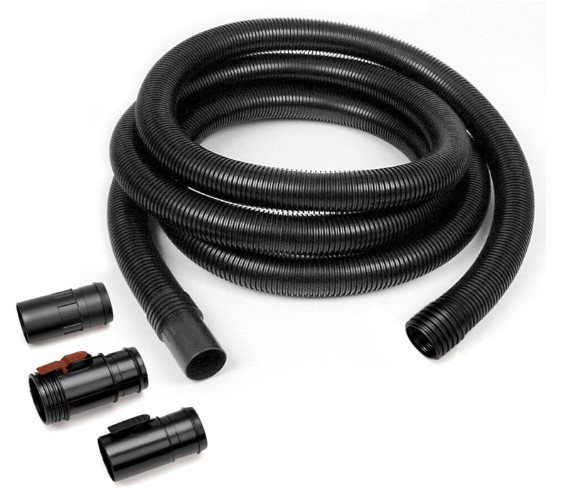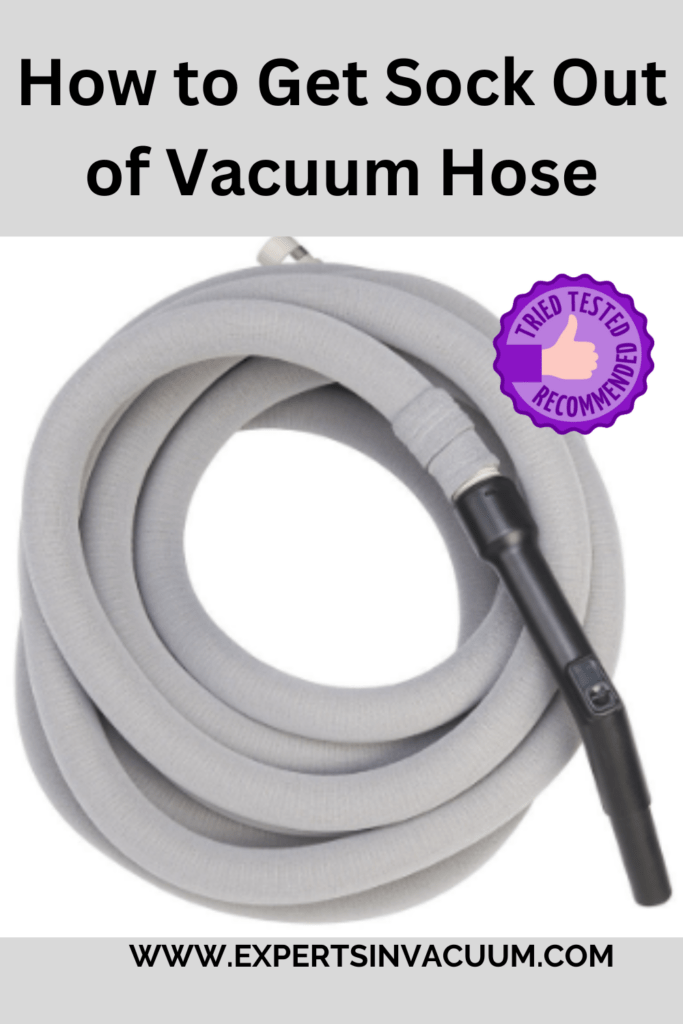
Are you tired of that frustrating moment when a sock gets stuck in your vacuum hose? You’re not alone! But fear not, because I’ve got you covered with 7 proven steps to rescue that rogue sock and get your vacuum back in action.
Whether you’re a cleaning novice or a seasoned pro, these simple tips will have you saying goodbye to vacuum hose sock struggles for good! Let’s dive in!
In this post we will cover:
- How to Get Sock out of a Vacuum Hose
- How do I know if there is a sock stuck in my vacuum hose?
- What tools do I need to remove a sock from my vacuum hose?
- What should I do if I cannot remove the sock from my vacuum hose?
- Can a clogged vacuum hose cause damage to my vacuum cleaner?
- Can I prevent my vacuum cleaner from getting clogged with socks?
7 Proven Steps for Removing a Sock from a Vacuum Hose
How to Get Sock out of a Vacuum Hose: A step by Step Guide
The following are the steps to take to remove a sock from a vacuum hose:
Step 1: The first step is to unplug the vacuum and then turn it off. Since your safety should always come first, turn off the vacuum before attempting to remove the sock from the machine.
Step 2: Locate and remove the hose in which the sock is caught. The sock is most likely to be near the bottom of the vacuum or at the point where the hose connects to the vacuum. If the hose is clear or almost completely clear, you may be able to see the sock through it.
Step 3: Using tweezers or needle-nose pliers, grasp the sock and pull it out of the hose. If you cannot reach the sock with pliers or tweezers, use a coat hanger or a long, thin rod, such as a broom handle, to push it through the hose.
Use a flexible rod that can easily navigate through the hose.
Step 4: After removing the sock from the hose, shake the hose to remove any dirt or other debris that may have become lodged inside. That will reduce the likelihood of things becoming clogged in the future by doing so.
Step 5: Restart the machine and after restarting the vacuum, reconnect the hose to the machine and check to see if it still works properly.
Step 6: Keep in mind that even if the sock is not visible to you, it may still be inside the vacuum, wrapped around the brush roll, or other components. In this case, you will need to remove the brush roll to search for the sock. If you find it, you should get rid of it.
Step 7: You should also inspect and clean your vacuum hose regularly. This is especially important if you live in a dusty or dirty environment. If the hose of your vacuum becomes clogged with debris, it can reduce suction power and cause the device to overheat.
If you follow these steps, removing a sock from a vacuum hose will be simple, and your vacuum will continue to work properly. To avoid injuring yourself, always use extreme caution when operating your vacuum and any of its components.
FAQs
How do I know if there is a sock stuck in my vacuum hose?
Baking soda isn’t just for baking; it’s a powerhouse cleaner, tackling carpet odors effortlessly. But what happens if your vacuum starts acting up? Reduced suction power, strange noises, and a whistling sound could signal a sock caught in the hose.
To troubleshoot, unplug the vacuum, inspect the hose, and gently remove any obstructions using a long, flexible object. If the sock remains elusive, consult the owner’s manual or contact the manufacturer for guidance.
Keeping an eye (and ear) out for these signs ensures your vacuum keeps your space clean without any hidden hiccups.
What tools do I need to remove a sock from my vacuum hose?
Got a sock stuck in your vacuum hose? Don’t fret! You’ve got a few handy tools at your disposal. First up, grab a pair of needle-nose pliers to grab and pull out the sock. If that’s not doing the trick, try a straightened wire hanger or a long, flexible object like a broom handle.
For more specialized help, consider a vacuum hose brush with stiff bristles. And don’t forget your trusty flashlight to spot that elusive sock. Just remember, safety first—unplug the vacuum before getting to work. If all else fails, consult your vacuum’s manual or the manufacturer for guidance.
What should I do if I cannot remove the sock from my vacuum hose?
Got a stubborn sock stuck in your vacuum hose? Don’t panic! Start by ensuring the vacuum is off and unplugged. Try using needle-nose pliers or tweezers to grip and pull out the sock, being careful not to damage the hose.
If that fails, gently push the sock through with a coat hanger or wire. Alternatively, use vacuum attachments like a hose brush or crevice tool. If all else fails, consult your vacuum’s manual for disassembly instructions or seek professional help.
Remember, regular maintenance prevents clogs, so keep an eye on hoses, filters, and bags.
Can a clogged vacuum hose cause damage to my vacuum cleaner?
Regular maintenance of your vacuum cleaner’s suction hose is crucial to prevent damage and ensure optimal performance. A blocked hose can strain the motor, leading to overheating and potential breakdowns.
Additionally, debris buildup reduces suction power, necessitating more frequent cleaning. To maintain efficiency, inspect and clean the hose regularly using appropriate tools like brushes or coat hangers.
Similarly, check and clean or replace the filter as per manufacturer guidelines to prevent reduced suction and potential harm to the machine. By prioritizing these simple maintenance tasks, you can prolong your vacuum cleaner’s lifespan and keep your space clean effortlessly.
Can I prevent my vacuum cleaner from getting clogged with socks?
Keeping socks from tangling in your vacuum cleaner is crucial for optimal performance. Begin by clearing the cleaning area of any small objects, like socks, to prevent them from being sucked in. Opt for a vacuum with a HEPA filter to capture tiny particles, reducing the risk of clogs.
Alternatively, choose a vacuum with a brush roll switch to deactivate it in cluttered areas. Some models feature self-closing hoses, preventing blockages. Remember to unplug and turn off the vacuum before clearing any clogs.
These simple steps ensure efficient cleaning while prolonging your vacuum’s lifespan.
What should I do if the vacuum cleaner is not working properly after I removed the sock?
When your vacuum cleaner encounters issues beyond a simple obstruction, troubleshooting steps can help identify and resolve the problem. Start by ensuring the vacuum is properly plugged in and the outlet functions.
Next, inspect the filter for clogs, as blockages impede airflow. If the issue persists, check the hose and brush roll for obstructions, using tools like a brush or coat hanger to clear them. If problems persist, seek assistance from a qualified technician or contact the manufacturer for guidance.
Prompt attention to these steps ensures your vacuum operates efficiently, maintaining cleanliness in your home or workspace.
The Wind-Up
So there you have it, seven tried-and-true methods for freeing that stubborn sock from your vacuum hose. From gentle tugs to using tools, these steps can save you time and frustration. Remember, a bit of patience and creativity go a long way when tackling household mishaps. So, next time your vacuum swallows up a sock, fear not! Armed with these techniques, you’re ready to reclaim your hose with ease.
